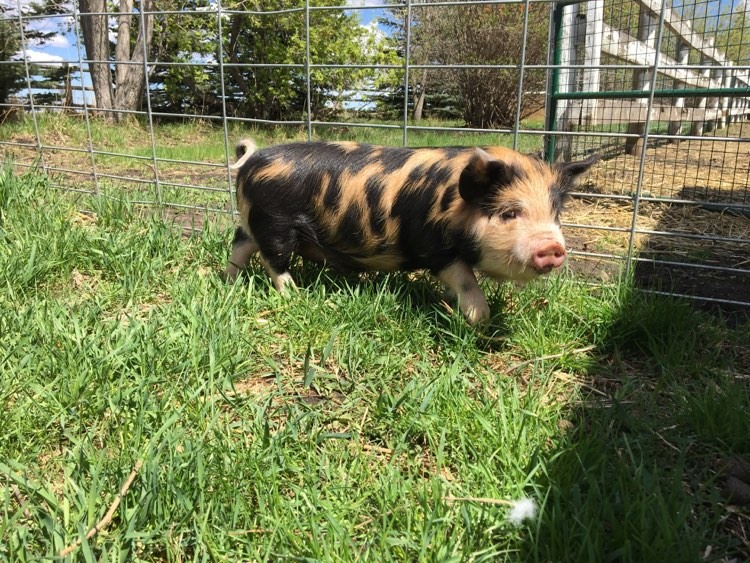Pre-slaughter considerations
There are a couple of important things you need to know before you reach the final step in the pig production journey. Do not wait until the last minute to make slaughter arrangements at a abattoir, as some abattoirs require reserving your date weeks or months in advance – as well not all abattoirs process hogs. Before sending pigs to an abattoir or transported, as mentioned under the transportation section, they need to be tagged or tattooed appropriately, as well as a manifest needs to be completed. It is the simplest to ask the abattoir what their pig ID preference is. There are a couple of items you will need for identifying your pigs, these things include: ear tags and tagger, tattoo ink and slap hammer, or stencil and food-safe animal spray paint. You don’t need all of these – which ever one you prefer.
Other very important considerations that have direct impact on food safety and carcass quality should be taken into account.
- Ensure that proper withdrawal times are met for any drugs or medications (injectable, feed, or water) prior to having your pigs slaughtered.
- Ensure pigs are healthy and fit for transport when having pigs slaughtered off farm.
- Take appropriate measures to reduce stress. Properly designed areas can reduce the stress of the pigs and the handler.
- Being too forceful when moving pigs (particularly when loading for slaughter) can result in a stressed pig and subsequent poorer meat quality.
- Withdraw feed 12 to 18 hours before the anticipated slaughter time (not 12 to 18 hours before transport). A full stomach at the time of slaughter increases the chances of carcass contamination from stomach and intestinal contents. However, it is important that pigs have access to water throughout the feed withdrawal period.
- Transport manifests need to be filled out and kept onboard during transport, and all pig movements need to be reported to PigTRACE within seven days.
Slaughter Plant Health & Safety
Sending your pigs to the abattoir is the last step in the raising your pigs. Abattoirs are essential but can be one of the main ways you can bring disease back into your herd. Careful planning and preparation are essential to maintaining the health and welfare of your pigs back home. You should consider the following when delivering pigs to slaughter.
- Consider abattoir dirty and an area of potential contamination – without proper care, you can bring disease back to your farm and your pigs.
- Wash your vehicle/trailer prior to loading your pigs for transport.
- Wear disposable boot covers, or specific set of boots, and gloves at the abattoir. Don’t wear clothing used to deliver your pigs to the abattoir, at your farm, until they are thoroughly washed and dried. Avoid using the boots (footwear) entirely.
- Do not transport pigs that are sick or have obvious signs of lameness.
- After leaving the abattoir, ALWAYS wash and disinfect your vehicle and trailer prior to arriving at your farm.
- When arriving home:
- Avoid visiting your pigs on the same day you travel to the abattoir
- Change clothes and footwear prior to visiting your pigs
- Wash and dry clothes worn to the slaughter
Where can I slaughter my pigs?
There are a couple of different options you have when is comes to slaughtering your pigs. Perhaps you will be doing yourself, if so there are several precautions that need to be considered for on-farm slaughter. Check out the Food Safety section for more information. If you planning on having your pigs slaughtered at an abattoir you have a couple of different options, depending on if and where you are selling your pork. There are health-licensed facilities (in some provinces), provincially and federally inspected abattoirs. Locations of health-licensed, provincial and federally inspected slaughter facilities can be found on your provincial government’s website.
On-Farm Slaughter
Each province has specific requirements regarding the sale of product (meat) associated with on-farm slaughter. Check with your provincial ministry of health or agriculture regarding regulations that affect your operation.
Provincially Inspected
You will be able to sell at various locations within your province, including restaurants, retail locations, and farmers’ markets, in addition to the farm gate.
Federally Inspected
Pigs can be sold to a slaughter facility without you having to market the pork. Certification under the Canadian Pork Excellence program is required (www.cpc-ccp.com/canadian-pork-excellence).
